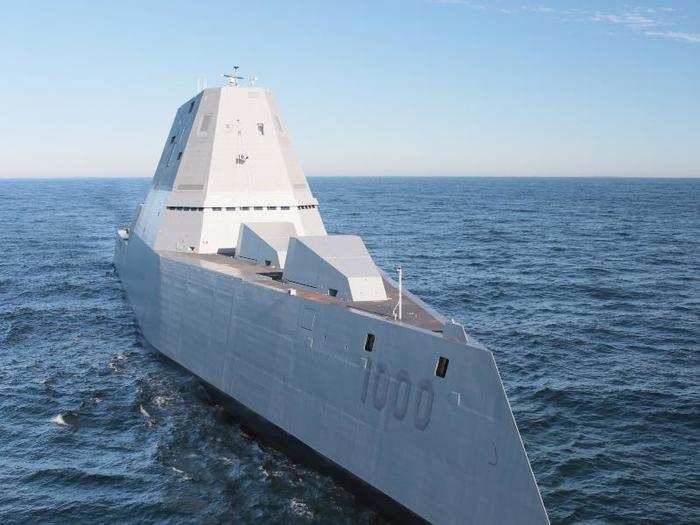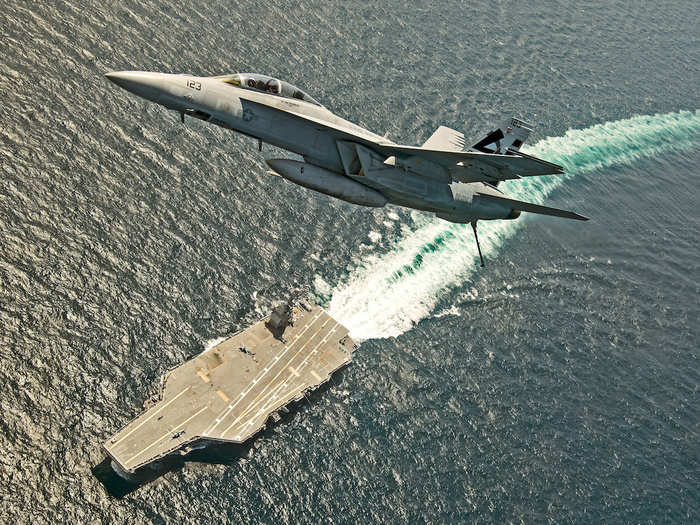- Home
- slideshows
- miscellaneous
- Here are 5 of the worst weapons projects the US military has in the works
Here are 5 of the worst weapons projects the US military has in the works
1. F-35 Lightning II Joint Strike Fighter

2. Zumwalt-class destroyer

The US Navy has invested two decades and tens of billions of dollars into the development of these advanced warships, which lack working guns and a clear mission.
The two 155mm guns of the Advanced Gun System are incredibly expensive to fire. One Long-Range Land Attack Projectile costs around $1 million. Procurement was shut down two years ago, leaving the Zumwalt without any ammunition.
The guns never provided the desired range anyway, so now the Navy is talking about possibly scrapping the guns entirely.
The Zumwalt has also struggled with engine and electrical problems, as well as a potential loss of stealth capabilities due to the use of cost-saving bolt-on components.
While the Navy had planned to field more than 30 Zumwalt-class destroyers, the service now plans for only three.
3. Littoral Combat Ship

The Littoral Combat Ship (LCS), sometimes referred to as the "Little Crappy Ship," has suffered from uncontrolled cost overruns, delivery delays, and various mechanical problems.
The Navy has pumped around $30 billion over roughly 20 years into this project, which was started to create an inexpensive vessel that was small, fast, and capable of handling a variety of missions in coastal waterways.
The LCS was specifically designed to carry out anti-submarine warfare, mine countermeasure, and surface warfare missions in contested littoral waters, but there have been a lot of problems with the modular mission packages designed to be loaded aboard.
There are also concerns that the ships are not survivable in high-intensity conflict and that they are not sufficiently armed to perform their missions, according to the most recent Department of Defense operational testing and evaluation assessment.
While the Navy initially aimed to build a fleet of 55 ships, the LCS order has since been reduced to 35. The Navy, which has struggled to deploy the ships it already has, is currently looking at new missile frigates to replace the LCS.
4. Ford-class aircraft carrier

The $13 billion USS Gerald R. Ford aircraft carrier continues to suffer from a variety of problems even as the Navy moves forward with plans to build more Ford-class supercarriers.
The Ford was expected to be delivered to the fleet this summer, but delivery has been delayed until at least October due to persistent problems with the weapons elevators and the propulsion system.
This is not the first time the powerful ship has been delayed.
This massive flattop has also had problems with the basic requirements of an aircraft carrier, launching and recovering planes. The most recent Department of Defense assessment called attention to the "poor or unknown reliability of systems critical for flight operations."
President Donald has repeatedly criticized, occasionally at inappropriate times, the new electromagnetic catapults, which still don't work correctly. Just as he was critical of the rising F-35 costs, Trump has also frequently slammed the ballooning costs of the Ford-class carriers.
5. Electromagnetic naval railgun

The problem with the railgun was that the Navy began pouring time and money into research and development without really considering whether or not the weapon was a worthwhile investment militarily.
The railgun, which the Navy has invested more than a decade and over $500 million in developing, suffers from rate of fire limitations, significant energy demands, and other troubling technological problems that make this weapon a poor replacement for existing guns or missile systems.
"It's not useful military technology," Clark previously told Business Insider. "You are better off spending that money on missiles and vertical launch system cells than you are on a railgun."
Chief of Naval Operations Adm. John Richardson described the railgun project as a lesson in what not to do during a talk earlier this year. When asked about the program, the best answer he could offer was: "It's going somewhere, hopefully."
Popular Right Now
Popular Keywords
Advertisement